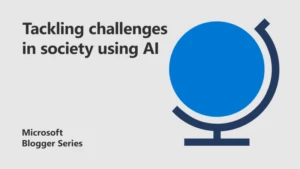
Four ways to reduce your digital pollution
 Consider this… every time you send an email, you require electricity to power your device and a Wi-Fi connection to contact the server that enables your email to be sent. These actions emit carbon into the air in the same way that physical behaviours do. This is known as ‘digital pollution’.
Consider this… every time you send an email, you require electricity to power your device and a Wi-Fi connection to contact the server that enables your email to be sent. These actions emit carbon into the air in the same way that physical behaviours do. This is known as ‘digital pollution’.
To put this into context, the internet emits roughly a billion tonnes of CO2 per year. Compare this to in 2019, where worldwide flights produced 915 million tonnes of CO2. If the internet were a country, it would be the sixth-largest polluter in the world.
Why the Green Report?
To empower companies to understand their carbon footprint and find ways to reduce digital pollution, we’ve created The Green Report. Designed to educate and propose tangible solutions, it can help large businesses cut greenhouse gases, migrate their energy to renewable sources, and increase sustainability on a large scale. We help leaders understand the impact of their products, services, processes, and behaviours on digital pollution and how to innovate in an agile way. Ultimately, The Green Report can help businesses effect real, long-term change.
These are ambitious targets. We know that change needs to take place on a large scale, at a human and technology level, both inside and outside the company.
That’s why as part of The Green Report, we work closely with business leaders to help individuals within the company understand:
- Why carbon footprints matter.
- What impact their behaviours have on the environment.
- How they can make positive choices to reduce their digital waste.
- Where to find the resources and tools they need to make a difference.
Our formula for reducing digital pollution
The first Green Report was crafted bespokely to Vodafone’s requirements and it was designed to take an inner look at their sustainability practices, whilst helping educate, advise, and work towards the ultimate goal of reducing their digital pollution. This example alone reported saving 79,000kg of carbon – equivalent to the greenhouse gases generated by charging more than 10 million smartphones – and ~$1 million opex related to sustainable alternatives just under four weeks of work.
Through extensive research, focus groups, analysis and insight gathering, we learned a lot about the company’s existing practices and impact. We found that from within the company culture right through to end-users, there was much more that could be done to reduce their carbon footprint and increase sustainability.
The four Cs to reduce your digital footprint
The Green Report needed to make an impact. So, we collated our findings and developed our own formula for cutting digital pollution – The Four Cs.
Culture
It’s vital to promote an internal culture that supports sustainable development to see significant change. Strive to raise awareness and normalise behaviour that supports sustainable choices, alongside measuring the digital carbon footprint of products and services created.
Climate consciousness should be embedded in the DNA of every employee. Kick off with more visibility of policies around climate change and update your design standards. Publish data internally, possibly gamify it and celebrate successes and wins.
Cloud
Automation, optimisation, and sustainable practices are key to cloud-based success, whilst more consideration of procurement and budgeting is vital. It’s critical to review existing tools, systems, and processes and find opportunities to make them ‘greener’.
Turn off zombie service instances, as well as dev instances out of hours. Reduce on-demand, increase reserve instance coverage, and move away from annual billing to a real-time or more granular control way.
Code
There’s a need to lighten the load on code. Best practice and a more sustainable approach to requirements gathering will reduce the digital footprint of your code.
Optimise your page performance, weight, speed and overall efficiency. Emissions on mobile are higher than fixed line, so this is an area of focus.
Customer
More customers should be encouraged to go online and when they do, the company needs to ensure its technology is sustainable. When measuring online performance, it’s important that any business considers sustainability within their KPIs. For example, whilst dwell time may be a useful commercial KPI, it’s not great for emissions!
Look at metrics and find those pages with high bounce rates, remove any dead-end pages, and make your content as succinct and useful as possible.
The impact of digital transformation
 Understanding the impact of digital pollution feels even more urgent now, with so many people going online to work, socialise, and stay connected. While there has been a huge reduction in air and road travel, the UN says we need a 7.6 percent reduction every year to limit temperature increase to 1.5 percent.
Understanding the impact of digital pollution feels even more urgent now, with so many people going online to work, socialise, and stay connected. While there has been a huge reduction in air and road travel, the UN says we need a 7.6 percent reduction every year to limit temperature increase to 1.5 percent.
At Digital Detox, we’ve used this time to calculate our own carbon footprint whilst being on a fully remote working model. Our MD, Liam Snelling has put together a rough calculation of our carbon reduction, which has resulted in the range of 43-60 percent, compared to when we are in the office. Factors such as travel, procurement, water, waste, and home energy have all been taken into account.
We’ve also put together some tips on how to minimise your carbon footprint whilst working from home.
In the meantime, we’ll continue to spread the word on what digital pollution is and how businesses and individuals can take action to reduce their carbon footprint as they move to be a more digital organisation.
Find out more
How to use AI to promote environmental sustainability
Discover more ways AI can be used for social good
Learn more about Digital Detox
Sign the Partner Pledge to drive a sustainable and ethical tech sector
Tools to empower your development team
Watch the on-demand session: The 8 principles of sustainable software engineering
Listen to the Environmental Variables podcast series
About the author
 Narcisa Lupu is the Marketing Executive at humanity-led agency, Digital Detox. She is behind the social media noise, many of the blog posts, and looks after the events side. As an advocate for praising hard work, she is actively nominating her team for awards, with two wins so far this year. Her focus is to support in building out the Digital Detox community and work towards the company’s ultimate goal to leverage the latest technology to best service humanity, sustainability and growth.
Narcisa Lupu is the Marketing Executive at humanity-led agency, Digital Detox. She is behind the social media noise, many of the blog posts, and looks after the events side. As an advocate for praising hard work, she is actively nominating her team for awards, with two wins so far this year. Her focus is to support in building out the Digital Detox community and work towards the company’s ultimate goal to leverage the latest technology to best service humanity, sustainability and growth.
Outside of work, she strives to maintain a healthy lifestyle through fitness and cooking, loves travelling (even if it’s just to the park these days!) and explores new ways to be more sustainable.




